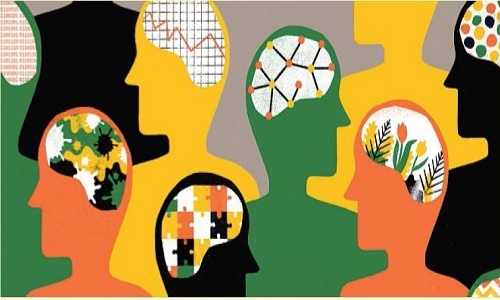The Upanishadic Concept Of Human Personality
| Date :19-Nov-2023 |

By DR BHUSHAN KUMAR UPADHYAYA
The Upanishads are the culmination of the Vedic knowledge. They contain the
superfine postulates, axioms and
conclusions about the Supreme
Reality, consciousness and the
material world. The famous Nobel
laureate and great Danish physicist, Neils Bohr had once remarked,
“ I go to the Upanishad to ask questions.” According to Schrodinger,
the multiplicity is only apparent, in
truth there is only one mind. This is
the doctrine of Upanishads.
Almost all the Upanishads are in
the form of dialogue between the
preceptor and the disciple. In tradition there are 108 Upanishads, but
twelve are more important which
are commented upon by Acharya
Shankara. The Taittiriya Upanishad
is known for the dialogue between
Varuna and Bhrigu about Pancha
Kosha - five sheaths of human personality. They include Annamaya,
Pranamaya, Manomaya,
Vijnanamaya and Anandamaya. The
Annamaya is the physical body
made of food. The Pranamaya is the
sheath nourished by the cosmic
energy. The Manomaya is the mental part of human personality. The
Vijnanamaya is the intellectual
sheath.
The Anandamaya is the
innermost blissful core of human
personality. In other words, it can
be said that the Panchakosha is the
physical, emotional, psychological,
intellectual and spiritual aspects of
human personality. They are interconnected and impact one another.
The Ayurveda and Yoga talk of various means and techniques including food, postures, breathing exercises and meditational practices to
achieve the best interconnectedness of all the aspects of personality. The concept of Pancha Kosha is
the holistic description of human
personality.
In the modern time the famous
psychologist, Abraham Maslow has
propounded the five tier hierarchy
of human needs. According to
Maslow, first, physical needs are to
be fulfilled. The fulfilment of physical needs necessitates the fulfilment
of safety needs. Then arise needs of
love and binding followed by the
needs of esteem and self actualisation. Maslow opines that after fulfilment of earlier needs, higher needs
arise. Through the hierarchy of
needs theory, Maslow has given a
holistic spectrum of human personality including physical, emotional, cognitive, intellectual and
spiritual layers of human personality.
A l ook at both the theories of
Pancha Kosha and Hierarchy of
Needs, we find some striking similarities. Both talk of holistic personality. Human personality is not
complete unless it is actualised. By
self actualisation he meant that the
full potential of any individual
should be manifested. A person
realises the best what his personality is made of. But Maslow treats
motivation as forming a hierarchy.
He moves from bottom to upwards
on the scale of needs. According to
Maslow, higher needs arise only if
lower needs are fulfilled. But
according to the concept of Pancha
Kosha, each layer of human existence resides in the higher level .
The Upanishad treats human existence as one structure comprising
both material and spiritual.
According to the Upanishads,
human personality can be understood at concentric levels starting
from material to spiritual. But both
the theories are based upon the
humanistic approach pointing to
the realisation of highest human
potential. It is interesting to note
that the concept of holistic human
personality has been visualised in
Indian culture thousands of years
ago.
(The writer is DG Police & CG,
Homeguards, Maharashtra)